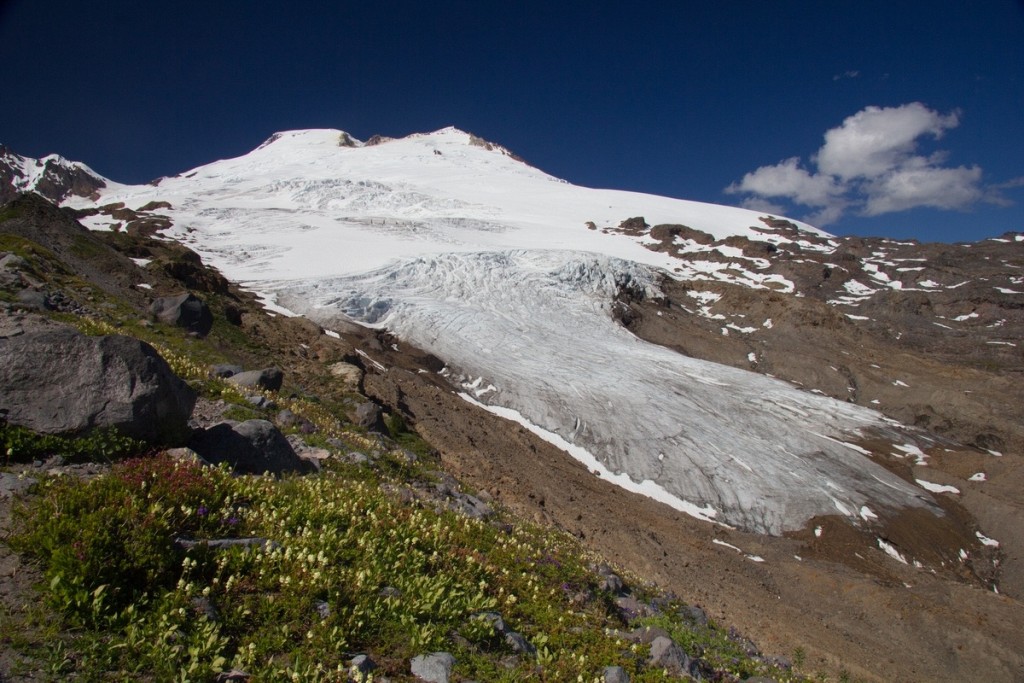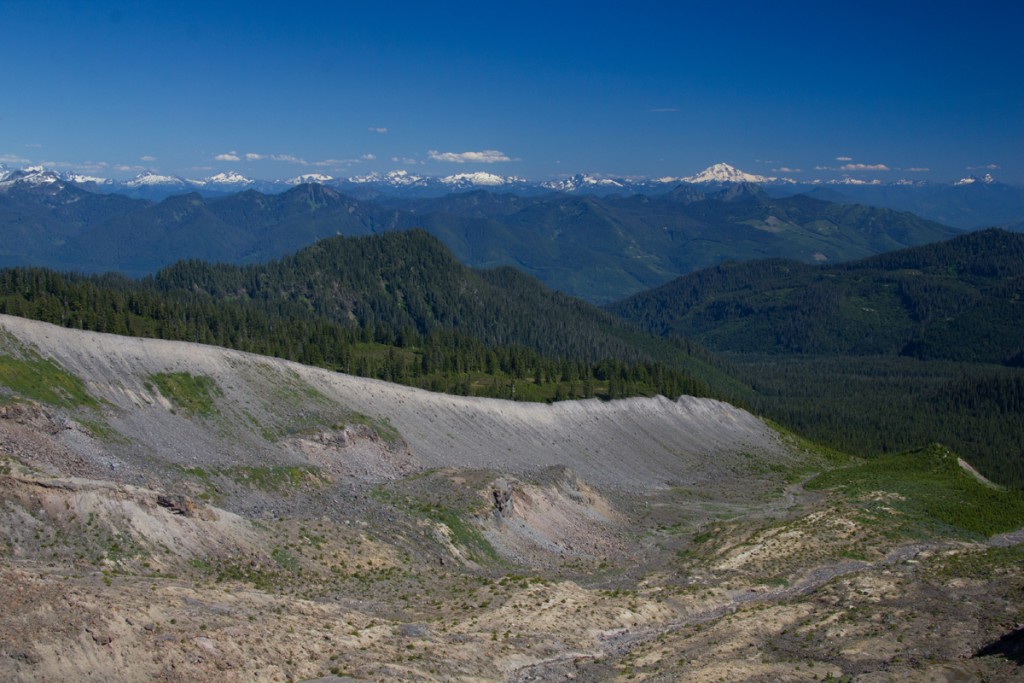Active Mind, Creative Spirit
What’s Left of the Glacier
During the last week of June I led a single overnight to the south foot of Mt Baker in the North Cascades. Anyone who is familiar with the hiking trails in that area is reading the first sentence again. Yes, the trails, usually not accessible until late July or early August were open and completely snow-free before June was out. It seems the California drought is the height of climate fashion and we’re following suit with the lack of snow and rain.
We camped on Railroad Grade which is one of the ascent paths to Mt Baker’s summit. It was beautiful and wild, and on a weekday when we did this, wasn’t cluttered with too many people. One pair of skiiers passed on the way up as we rested. They were optimistically porting splitboards and smiles while they chattered up the trail. Their round trip had about eight miles to hike in to get to a 10 minutes slide down, then a long hot dry haul out. Seems ridiculous, but our ski resorts weren’t open very long this winter so local skiiers are hard up for any snow – even crusty slush ten miles in.
Next we passed a pair of climbers descending as we headed up. I asked how the climb went and how conditions were.
“There’s not much water until you get to the glacier… and I am surprised every time by how much the glacier has receded each year when I come up.”
Yeah. That second part was especially hard to see, even after the warning.

The movie Chasing Ice turned me on to comparing glaciers across years. I took the above photo on June 25 of this year. The photo taken below is from my friend Orion Ahrensfeld. His was taken July 1, 2009. Note the exposed dirt on the right of his photo. It’s the same ridge that runs across my photo, just above the middle. Even though my photo was taken a week earlier in the season, his clearly shows a thicker, fuller, healthier glacier.

I spent a long time staring into the ravine that the Easton Glacier carved (photo below) and imagined the massive amounts of snow and ice that must have been there to create such a ravine. It’s now empty except a small muddy stream trickle from the bottom of the melting glacier tail.
Glacier studies have been recorded since the turn of the 19th Century, but seeing the whole spectacle with your own eyes brings it acutely into view.
